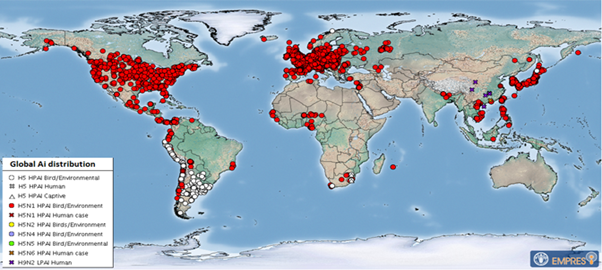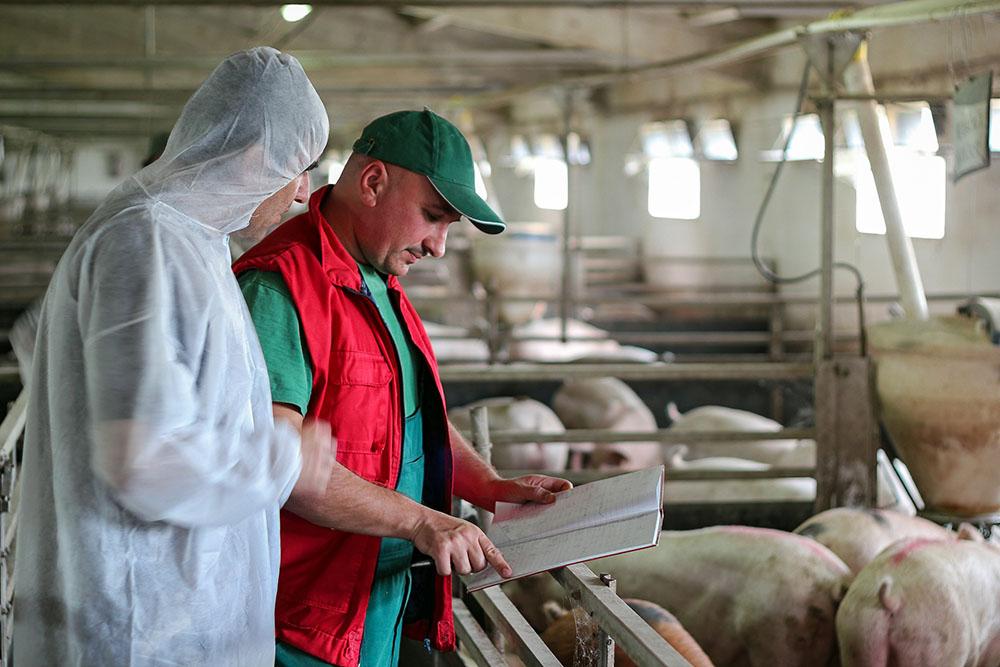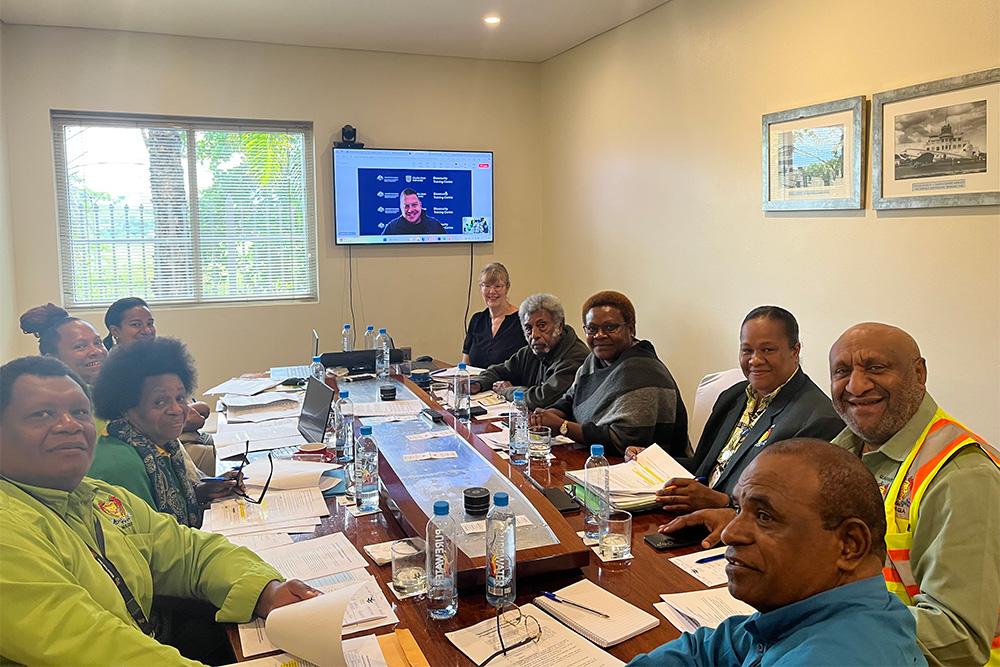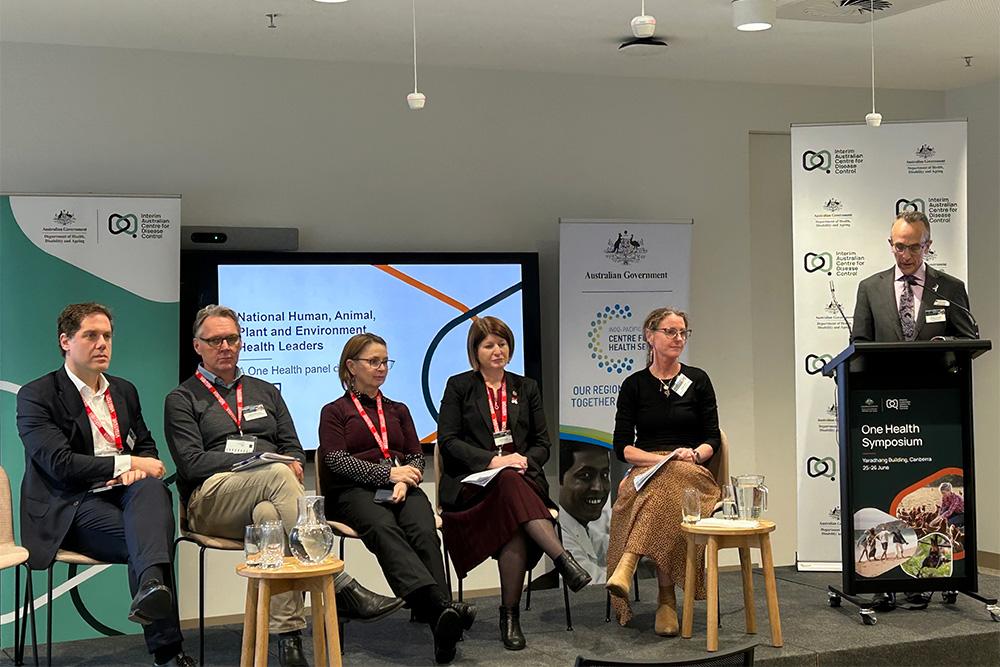Avian influenza is a highly contagious viral disease of birds and can affect most wild and domesticated bird species. HPAI viruses are a subset of all avian influenza strains that are identified by certain molecular markers that are associated with the ability to cause severe disease and mortality, usually in poultry.
HPAI H5N1 clade 2.3.4.4b is the predominant strain causing the outbreaks globally in the last 12-24 months. Australia and Antarctica are the only continents remaining free of this virus. Outbreaks caused by this strain have different characteristics to historical outbreaks caused by other strains, including:
- increased frequency and duration
- increased geographic distribution
- outbreaks persisting through previously low-risk seasons
- unpreceded number of countries affected
- More than 70 countries notified the World Organisation for Animal Health of HPAI outbreaks since October 2021.
- unprecedented impacts on wild birds
- estimates of millions of wild bird deaths, and potential threat to the recovery of the endangered California condor.
- unprecedented losses in poultry
There have also been increasing reports of infection in mammals, including at least 24 species of terrestrial and aquatic mammals that feed on or live in close association with birds. Sporadic human infections have also been reported, but there is no evidence that the virus has evolved to transmit efficiently between humans.
Australia is free from HPAI in accordance with international standards.
Some migratory shorebirds pass through affected regions in Asia or could be exposed to the strain of current concern in the northern hemisphere. Historically, there have been only rare introductions of new strains of avian influenza to Australia, and historical outbreaks in poultry have been of Australian strains.
The overall risk of HPAI being introduced to Australia by migratory wild birds has previously been considered low. However, the global situation and the increased intercontinental movement of the current strain of concern means that the likelihood of HPAI arriving in Australia via wild bird movements has potentially increased. Ongoing, collective monitoring, vigilance and preparedness remain critical in protecting Australia’s poultry industries, biodiversity and natural environments.




